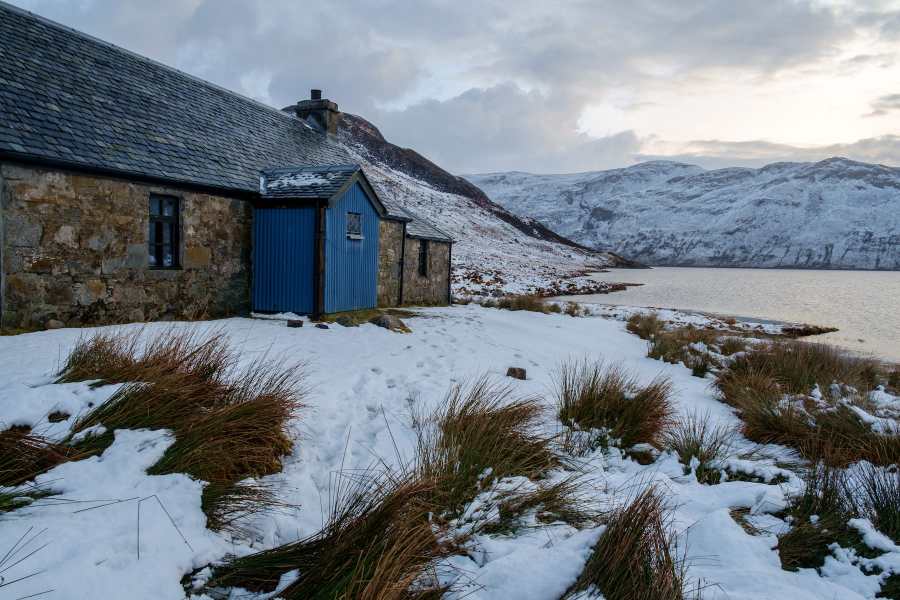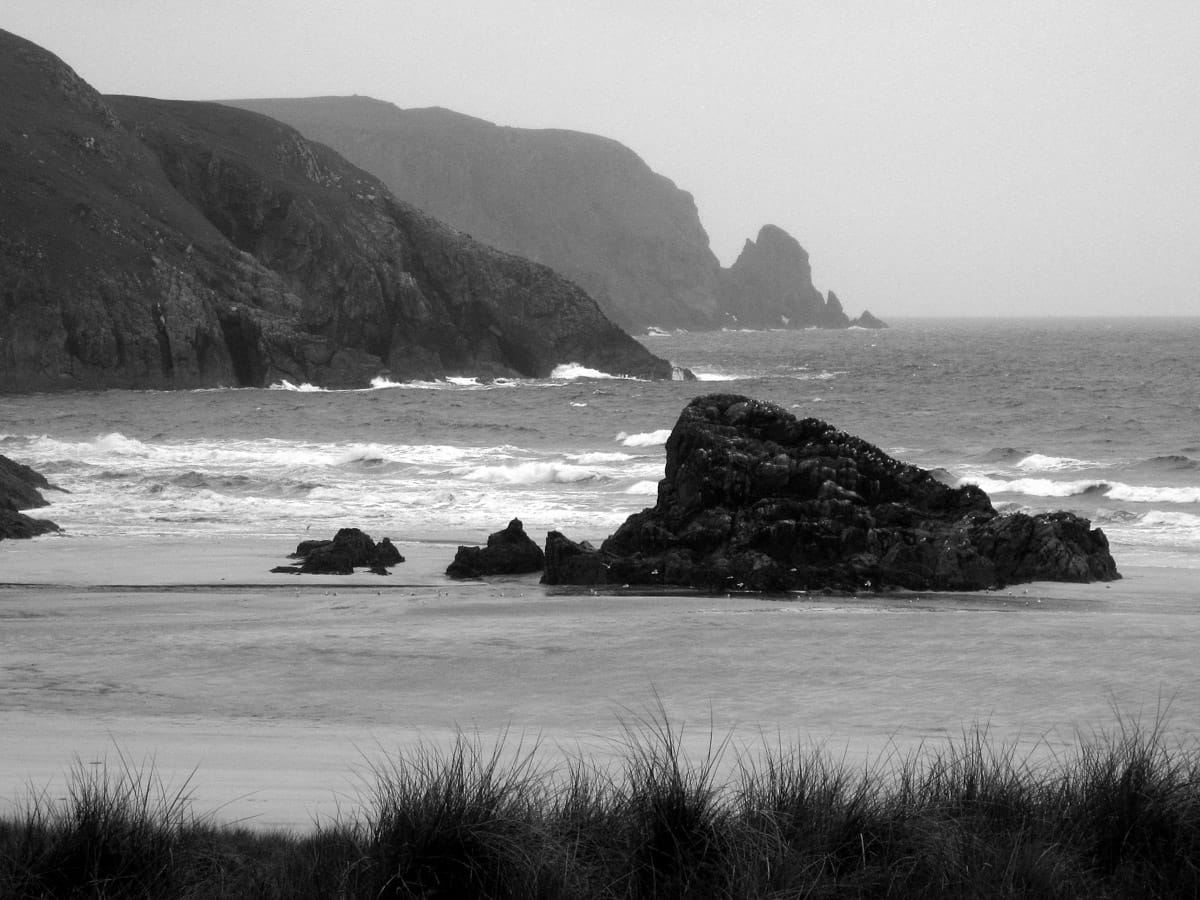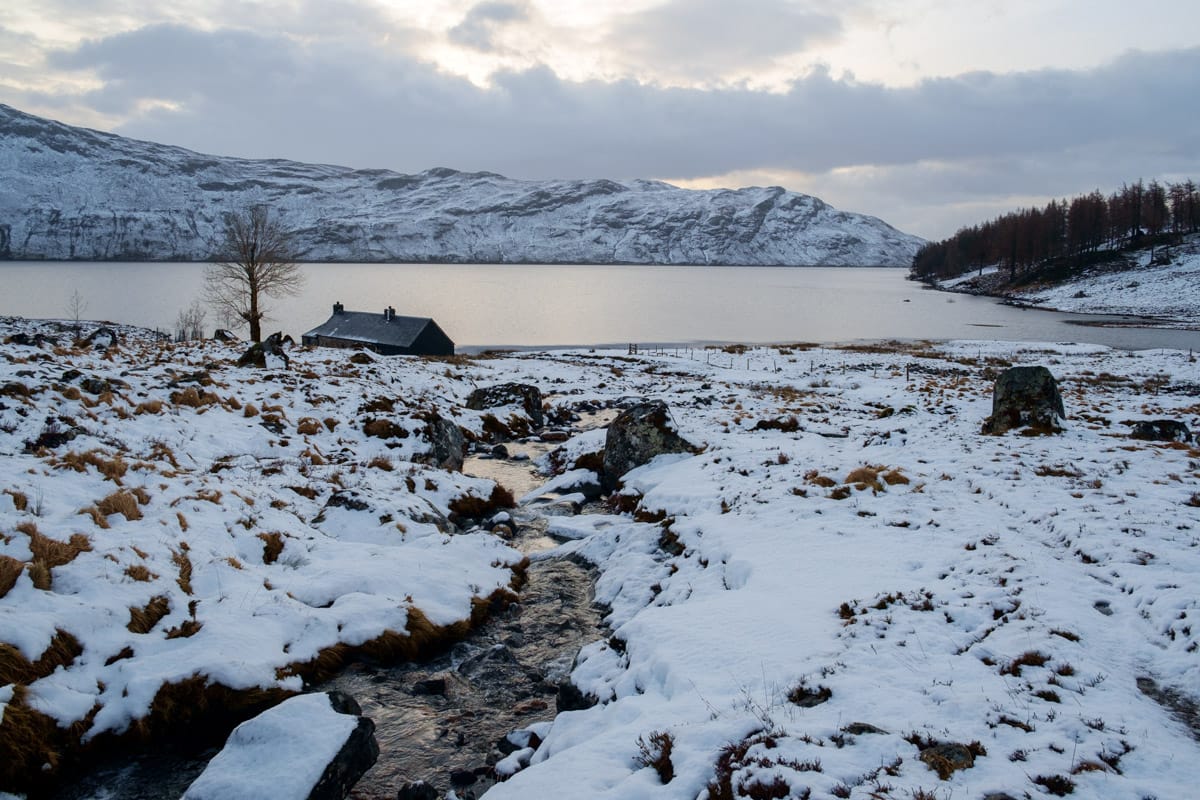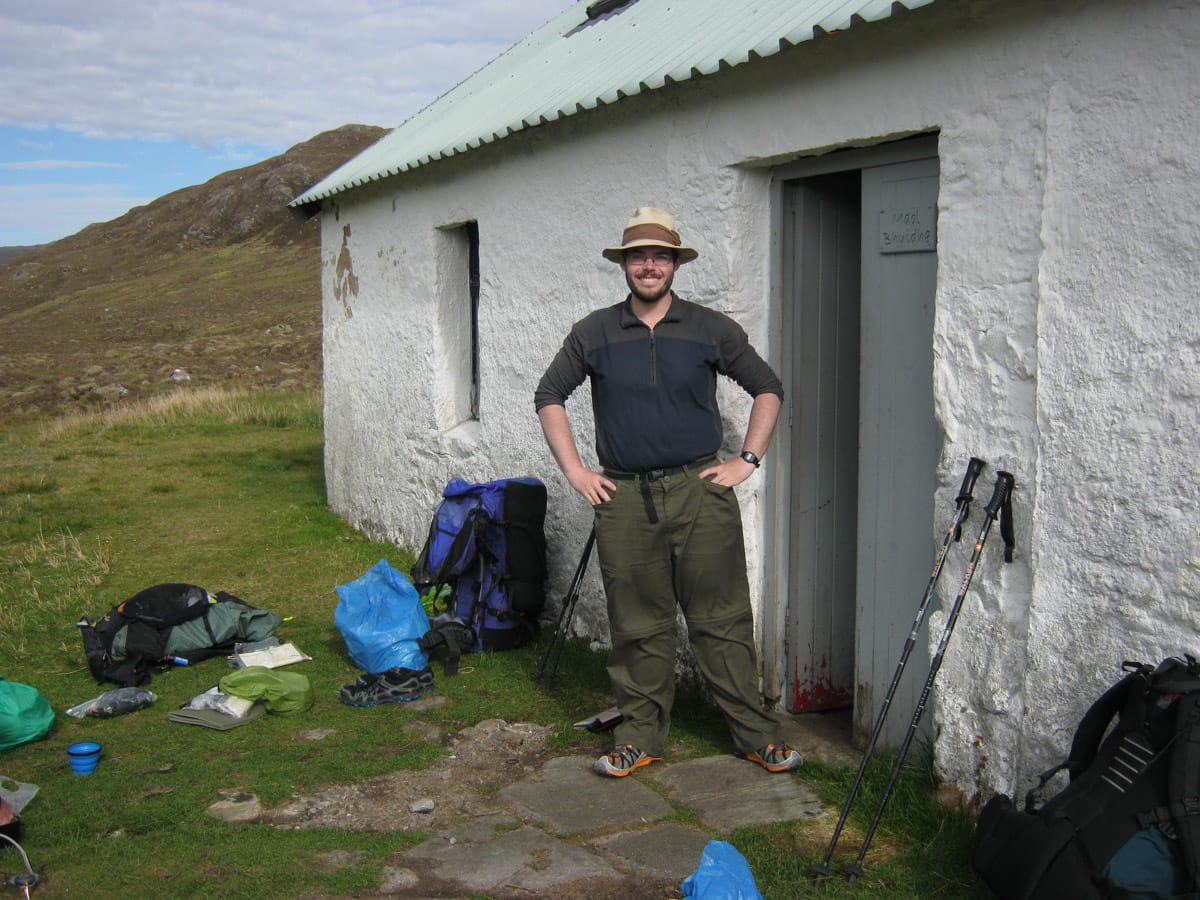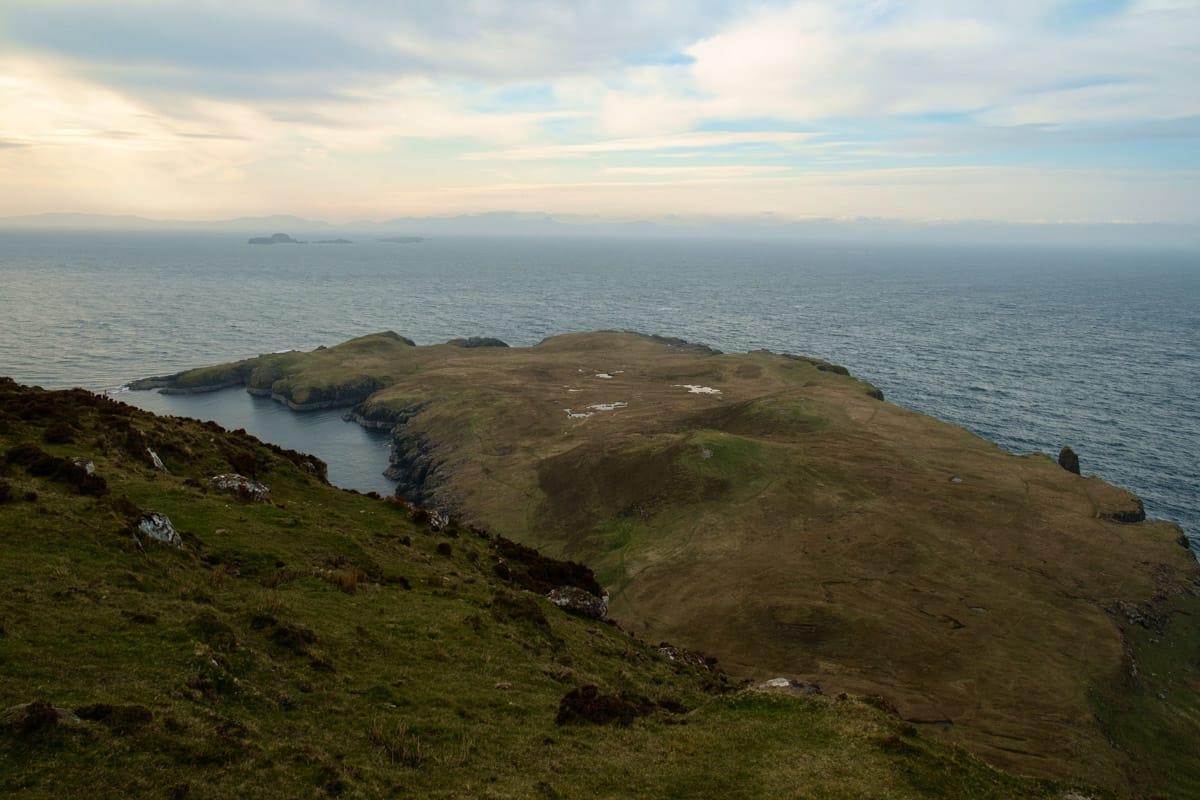For decades, backpackers in Scotland have appreciated the minor miracle that is the bothy. Here are 7 of the best
A bothy is a simple, unlocked shelter, free for the use of mountain travellers. Facilities are basic: probably a sleeping platform and a table, maybe bunk beds, some chairs and a fireplace. The water supply will almost certainly be a nearby burn, and most bothies do not have a toilet of any kind. A few have more lavish facilities including composting toilets or even electricity. Most bothies are maintained by volunteers in the Mountain Bothies Association, who make repairs, improve the facilities, and take out rubbish (although this should not be necessary – always pack out your own rubbish when you leave).
If you plan to visit a bothy, follow the Bothy Code:
- Respect other users;
- Respect the bothy;
- Respect the surroundings;
- Respect agreement with the estate;
- Respect the restriction on numbers.
Here are 7 of Scotland’s top bothies.
Kearvaig
Scotland’s northernmost bothy is also, in the opinion of some, the best. Situated just above the beach in the remote cove of Kearvaig Bay on the tip of Cape Wrath, this superb bothy is spacious, well appointed, and has a character all of its own. Often the last port of call for Cape Wrath Trail hikers (but access can be cut off during live firing incidents – call range control on 01971 511 242 or 0800 833 300 to check for updates). To access it from Durness you need to take a ferry across to Cape Wrath. One to savour!
In 2002, 39-year-old artist Margaret Davies was found starving in this bothy, and later died in hospital. It’s thought that she’d been staying in the bothy for some weeks, her strength draining as she starved. It isn’t clear why she was so unprepared. Notes found on the window of the bothy begged for people to bring food. The mystery may never be solved.
Shenavall
This bothy is situated on the edge of the ‘Great Wilderness’ of Fisherfield, home to the remotest of all the Munros. An Teallach’s battlements tower directly above the lonely strath where the ruins of other buildings can be seen as traces on the landscape. It’s a bleak place in foul weather, but on a sunny day in spring it’s hard to imagine anywhere better.
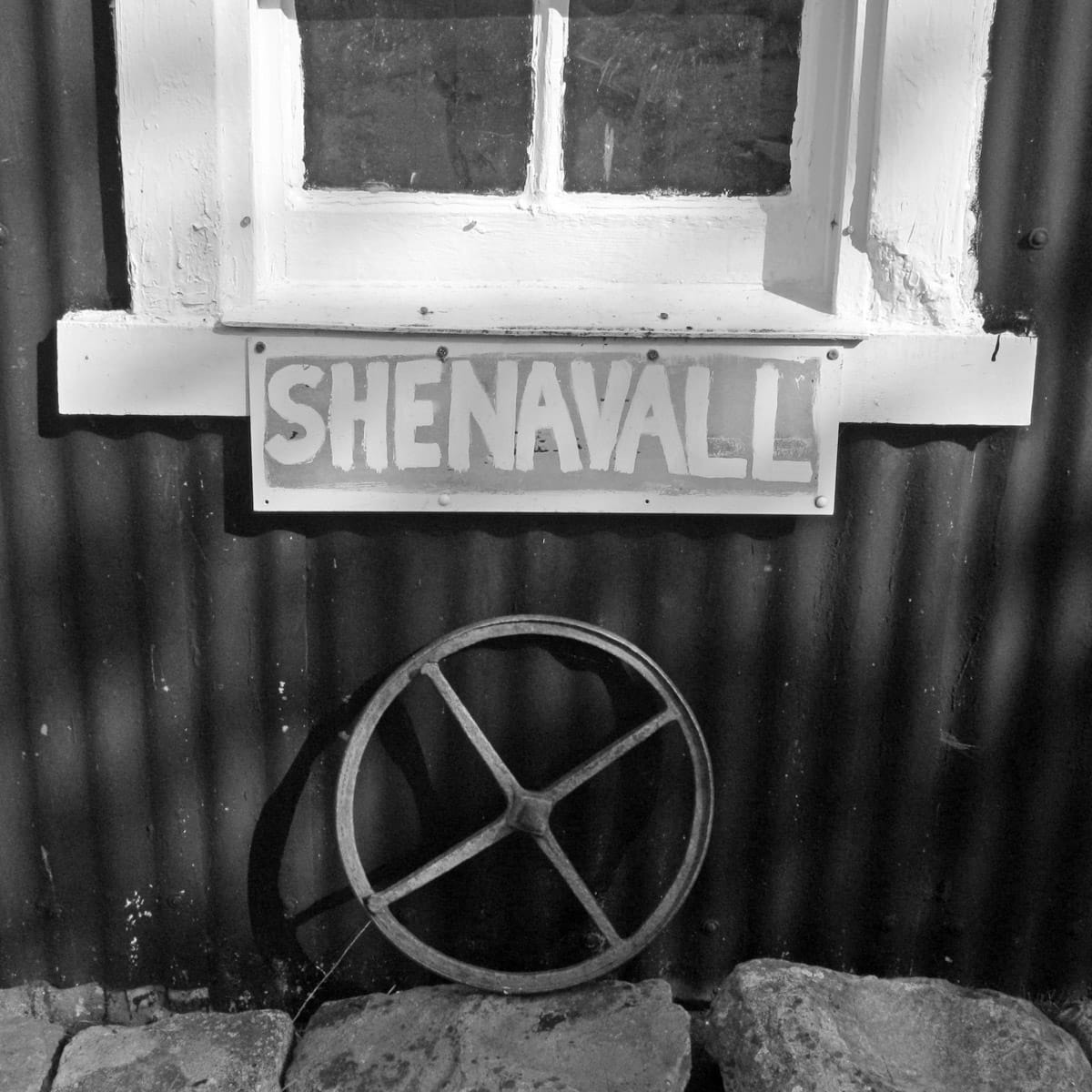
Shenavall was built in 1891. Its first occupants lived there for ten years: a new stalker on the Dundonnell estate and his family. It was a harsh place to eke out a living. In more recent decades, it’s become popular for a relatively remote bothy, no doubt due to its unbeatable location.
Ben Alder Cottage
This small bothy, also known as McCook’s cottage, is accessible from Dalwhinnie via a long but easy tramp along the shores of Loch Ericht, or – more challenging – through the Corrour Forest from Corrour Station. Legend has it that this bothy is haunted by the ghost of a woman who once sheltered there from a storm, although one theory is that this tale was made up by a ghillie on the Ben Alder Estate to frighten away unwelcome travellers.
The current building probably dates to 1871, but a bothy has existed on the site for much longer – certainly as far back as Culloden. In the present day, it’s a snug and welcoming building with three rooms and a good stove. Best watch out for that ghost, though…
Maol Bhuidhe
Maol Bhuidhe is often regarded to be the remotest bothy in Scotland. A long walk from Dornie or Strathcarron (perhaps sped up a bit by cycling some of the way) takes you into the rugged and remote mountain landscapes of the Attadale Forest. The terrain’s complex here. Intersecting glens, burns, rivers and ridges throw down barriers in all directions, but it’s worth it for a base within easy striking range of some superb Munros.
Staoineag
This usefully situated bothy stands guard over the easternmost corner of Glen Nevis, and perches on a scenic prow of land above the river. It’s a long walk from Fort William or a short walk from Corrour Station, depending on whether you’re going east or west, and is a better place to stay the night than the nearby Meanach.
From Staoineag’s logbook:
“Stuart Provan age ten. I have been in a bothy once before in my life, and I enjoy them very much. We arrived about nine o’clock at night after a long trek from Kinlochleven of about eleven miles. At first I was nearly bent over backwards with a rucksack and new climbing boots.
“P.S. I don’t know what I would do without my hot chocolate.”
The Lookout
This unusual bothy on Rubha Hunish, Skye’s northernmost peninsula, is a former coastguard watch station dating back to 1928. There’s a large bay window with unsurpassed views out to sea, and it’s one of the best bothies for whale-watching. The Mountain Bothies Association took over the building in 2006. Inside it’s rather cramped by the standards of many bothies, and there’s no stove or drinking water nearby, but a stay at the Lookout is such a novel experience that it deserves a place on this list!
Corrour
Last but by no means least, Corrour is one of Scotland’s most famous bothies, and almost certainly one of the busiest. It’s situated on the popular Lairig Ghru route between Aviemore and Braemar and frequented at all times of the year by backpackers, climbers and skiers. The classic walk up Devil’s Point and over Braeriach begins at this bothy. The building itself is small, sleeping only a few, but it has a good stove and a composting toilet. Litter can be a problem here – more so than at many other bothies – so please pack out any litter you find as well as your own. The volunteers who help maintain it will thank you.
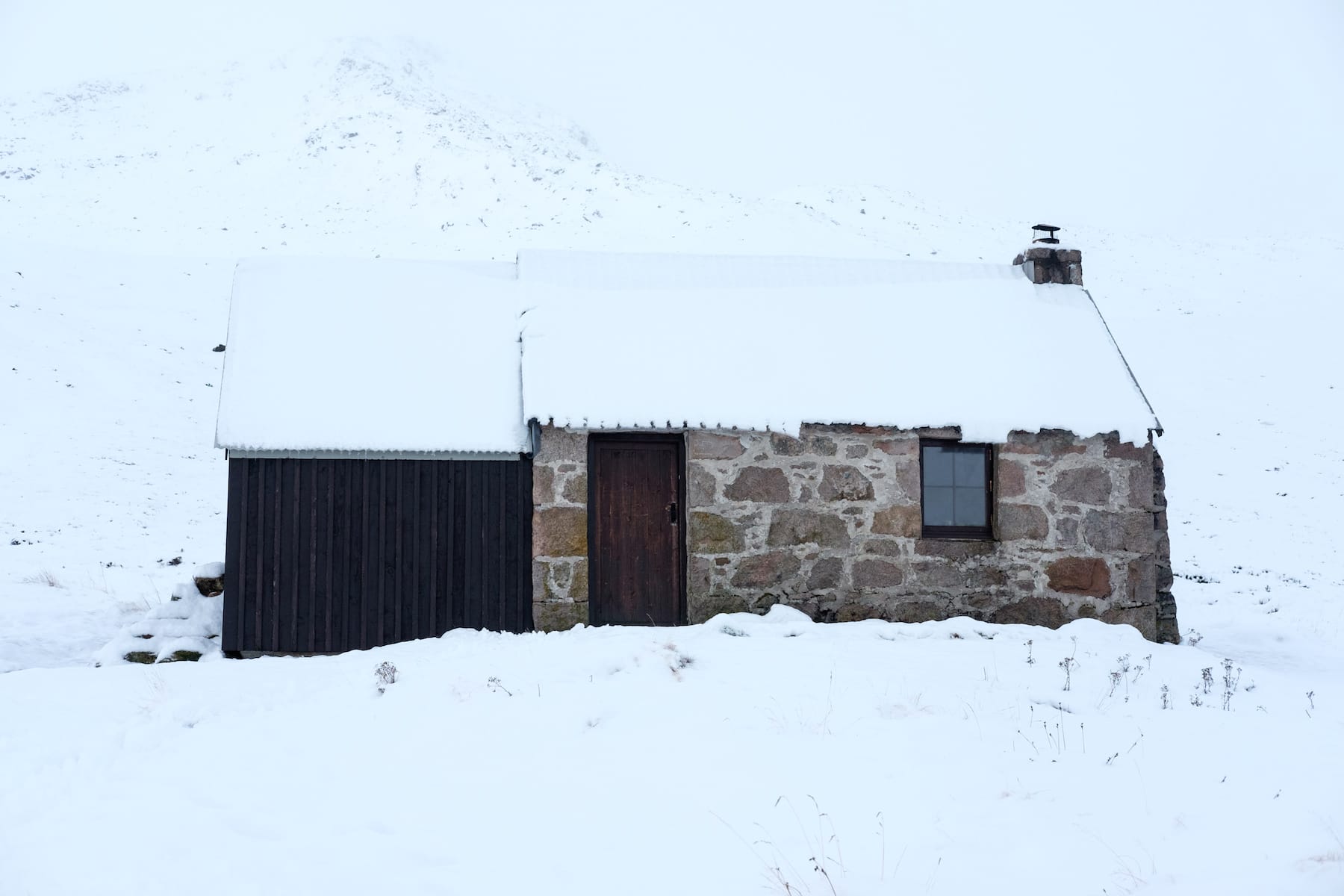
All images © Alex Roddie

